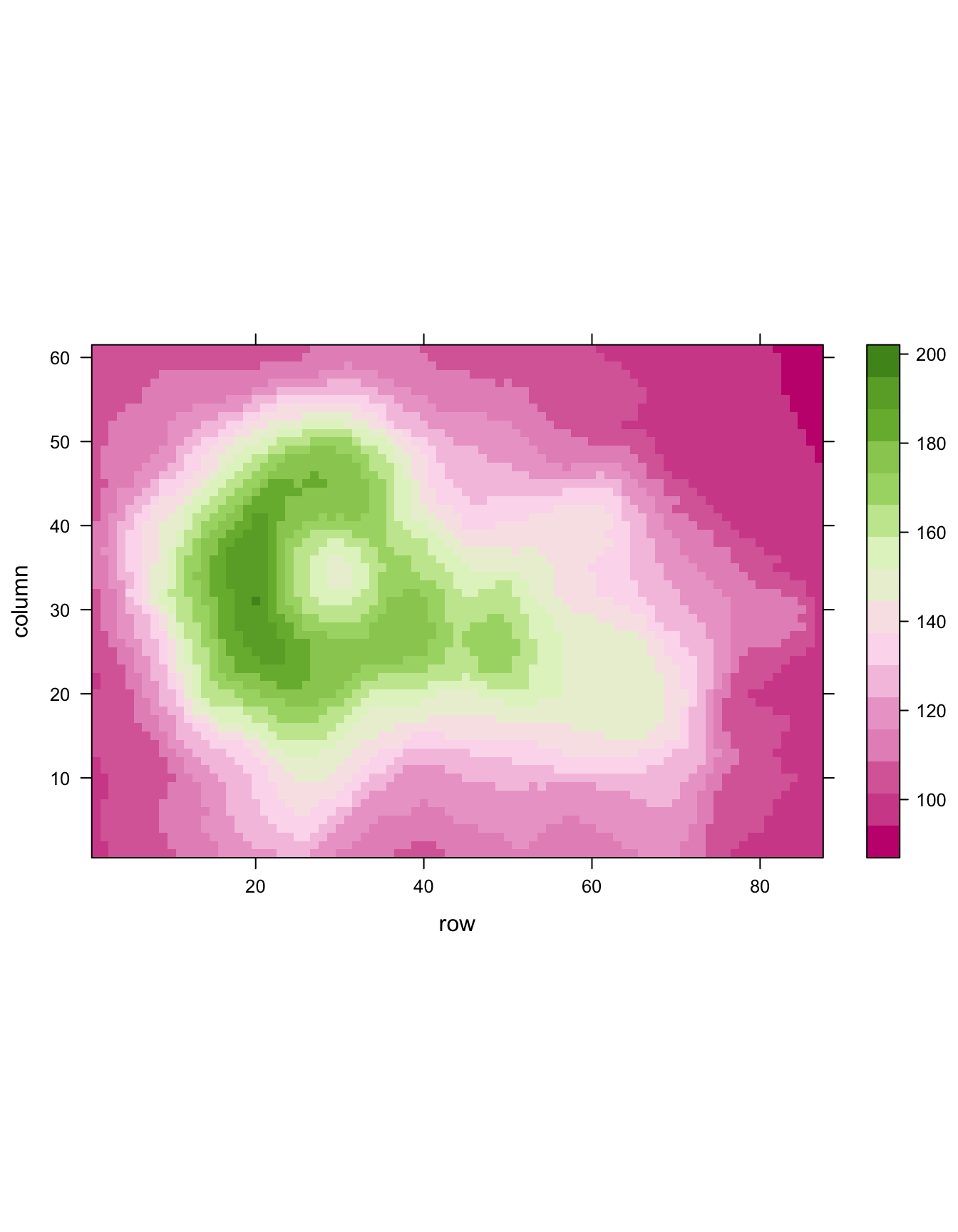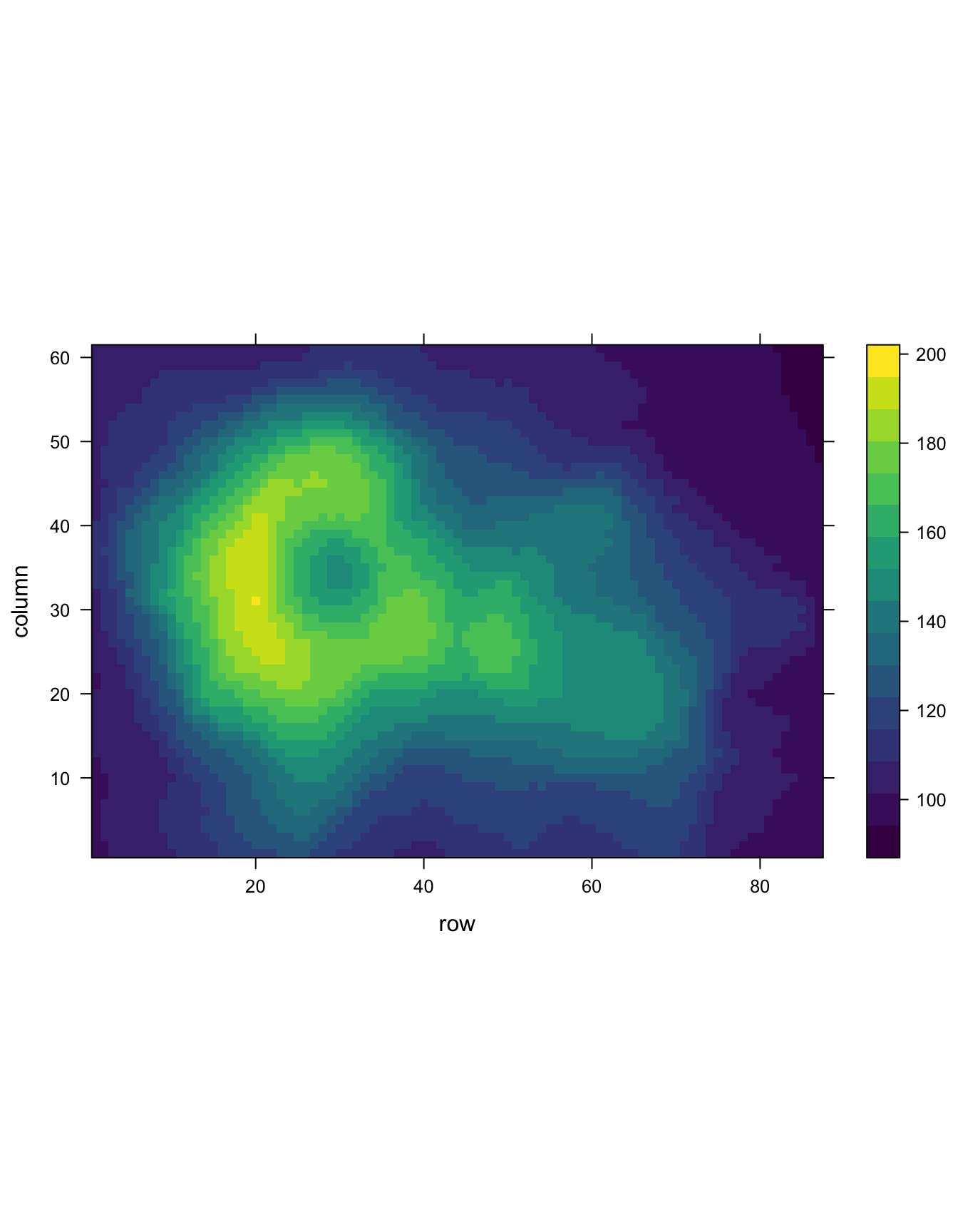Basis use of levelplot()
The lattice package allows to build
heatmaps thanks to the
levelplot() function.
Input data: here input is a data frame with 3 columns prividing the X and Y coordinate of the cell and its value. (Long format).

From wide input matrix
Previous example of this document was based on a data frame at the
long format. Here, a square matrix is used instead. It is the
second format understood by the levelplot() function.
Note: here row and column order isn’t respected in the heatmap.

Flip and reorder axis
The t() function of R allows to transpose the input
matrix, and thus to flip X and Y coordinates.
Moreover, you can reverse matrix order as shown below to reverse order in the heatmap as well. Now the heatmap is organized exactly as the input matrix.

Custom colors



There are several ways to custom the color palette:
-
native palettes of R:
terrain.color(),rainbow(),heat.colors(),topo.colors()orcm.colors() -
palettes of
RColorBrewer. See list of available palettes here. -
palettes of
Viridis: viridis, magma, inferno, plasma.

# Lattice package
require(lattice)
# The volcano dataset is provided, it looks like that:
#head(volcano)
# 1: native palette from R
levelplot(volcano, col.regions = terrain.colors(100)) # try cm.colors() or terrain.colors()
# 2: Rcolorbrewer palette
library(RColorBrewer)
coul <- colorRampPalette(brewer.pal(8, "PiYG"))(25)
levelplot(volcano, col.regions = coul) # try cm.colors() or terrain.colors()
# 3: Viridis
library(viridisLite)
coul <- viridis(100)
levelplot(volcano, col.regions = coul)
#levelplot(volcano, col.regions = magma(100)) 




